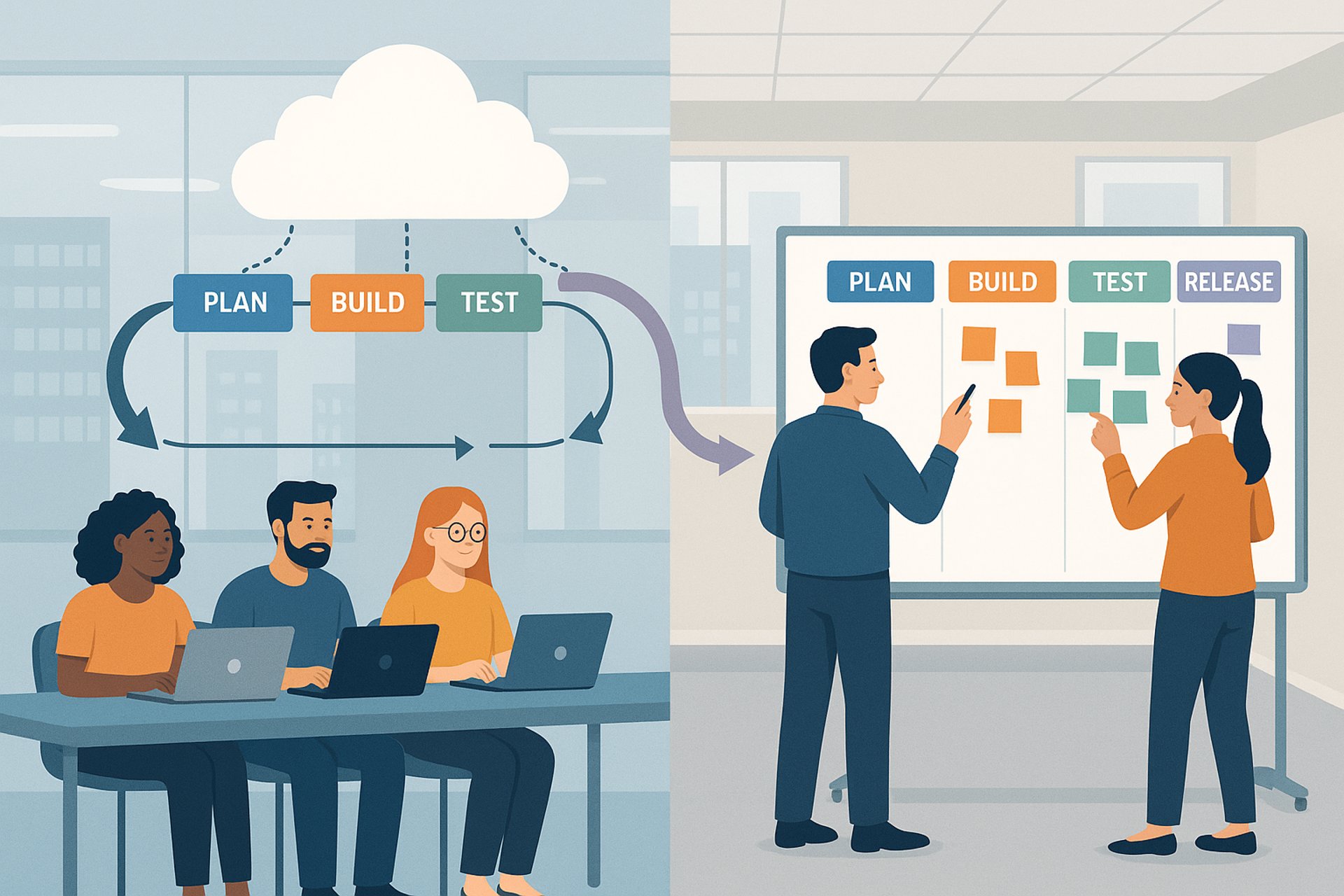
Modern Delivery Models & Agile Methodologies: Speed and Adaptability in Delivery
6/16/20253 min read
Agile methodology has become a default approach for modern software development and related fields (AI, FinTech, e-commerce, etc.) because of its emphasis on speed, adaptability, and customer-centric delivery. Unlike traditional waterfall projects that plan everything upfront, Agile teams work in iterative sprints, continuously integrating feedback and adjusting to change. This iterative approach dramatically improves time-to-market for new features and products – Agile teams can deliver usable increments in weeks rather than waiting months for a big release. It’s no surprise that Agile adoption is now mainstream: industry surveys show Agile projects achieve ~75% success rates (on average) in delivering on time and meeting goals, which is on par or slightly higher than even hybrid approaches . Moreover, teams using Agile techniques report around 30% higher productivity thanks to better work prioritization and elimination of inefficiencies .
Agile’s benefits are especially crucial in fast-evolving sectors like AI and FinTech. These industries face rapid changes in technology and user expectations, so the ability to pivot quickly and continuously refine the product is a competitive advantage. Agile practices (e.g. Scrum or Kanban) enable frequent releases and feedback loops, ensuring the final product is aligned with market needs. In fact, over half of organizations adopting Agile report improved alignment between development output and business objectives . For tech leaders, this means Agile teams can more effectively deliver value that matches customer demands and regulatory requirements (important in FinTech) even as those demands change. Agile methodologies also foster closer collaboration and transparency – cross-functional teams (developers, designers, QA, domain experts) communicate daily, which fits well with distributed and remote working environments. The bottom line is that Agile is now a strategic priority for organizations focused on innovation and resilience: it keeps teams laser-focused on high-value tasks, accelerates delivery, and reduces the risk of large project failures by delivering in small, validated increments .
Key Agile Advantages:
Faster Delivery & Feedback: Short sprints and continuous integration mean features go from idea to deployment quickly, enabling rapid user feedback.
Higher Success Rate: Agile projects have a higher likelihood of meeting goals; studies show significantly better performance versus rigid traditional projects .
Flexibility: Requirements can evolve without derailing the project. This adaptability is crucial in AI/ML projects or fast-moving e-commerce markets.
Better Team Alignment: Approximately 59% of Agile practitioners report better team collaboration and alignment with business needs after adopting Agile , leading to more relevant products.
In today’s fast-paced tech landscape, companies are rethinking how they deliver projects. Traditional in-house development is no longer the only option. Modern delivery models – Agile methodologies, remote talent, and team augmentation – are gaining traction for their ability to accelerate innovation and optimize resources. Tech leaders from startups to enterprises are leveraging these approaches to cut costs, scale quickly, and tap into global expertise. For example, a recent report found that 95% of tech professionals consider Agile practices critical to their operations, and 74% of employers are struggling to find skilled tech workers locally amid booming fields like AI.
Modern delivery models are reshaping how technology projects are executed. Agile methodologies provide the framework for rapid, iterative development and continuous alignment with business goals. Layered on top of that, remote talent and team augmentation offer the means to assemble the best possible team for the job – unconstrained by geography and traditional hiring timelines. The benefits of embracing these models are clear: lower development costs, faster time-to-market, scalable resourcing, and access to a world of expertise that can fuel innovation. Companies in software development, AI, FinTech, and e-commerce are already using these approaches to outpace competitors. For example, by augmenting teams with remote specialists, startups have cut product launch times from a year to a few months, and enterprises have handled sudden surges in workload without missing a beat. Meanwhile, Agile keeps these distributed teams focused and adaptable amidst change.
For CTOs, startup founders, and project managers, the strategic recommendation is to adopt a flexible delivery strategy. Rigid all-in-house development can be a disadvantage in today’s environment of global talent and fast-moving markets. Consider blending models: maintain an in-house core to steward your company’s vision and IP, but use remote engineers and augmented staff to extend your capabilities on demand. This hybrid approach often yields the best outcomes, balancing control and cohesion with agility and scalability . It’s also wise to invest in the tools and culture that make remote collaboration effective – robust project management software, clear communication norms, and practices like virtual stand-ups and code reviews are essential to get the most from a distributed team. When evaluating projects, think critically about which parts truly need co-location and which could be delivered faster or better by tapping external talent. In many cases, you’ll find that costly delays or hiring bottlenecks can be eliminated by opting for a remote/augmented model early on.
In closing, modern delivery models are not just a cost play – they are about strategic speed and flexibility. Accessing a global talent pool means you can hire the right people at the right time, fueling creativity and problem-solving that might be impossible to source locally. Agile processes ensure that all these contributors, whether in-house or remote, are synchronized and moving towards the same goals, adapting as needed. Tech leaders who leverage Agile, remote talent, and team augmentation effectively will find they can deliver software and digital products faster, more efficiently, and with greater innovation. In an era where time-to-market and technical excellence define success, using these modern delivery approaches is quickly becoming a competitive necessity. By embracing a mix of agile practices and distributed team models, organizations can reduce development friction, optimize costs, and ultimately create better technology solutions — all while navigating the ever-evolving demands of the software and tech industry.
UDIX | TECH
You Vision. Our Expertise. Engineering the Future of Business
Want to reach out directly to us?
sales@udixtech.com
© 2025. All rights reserved.